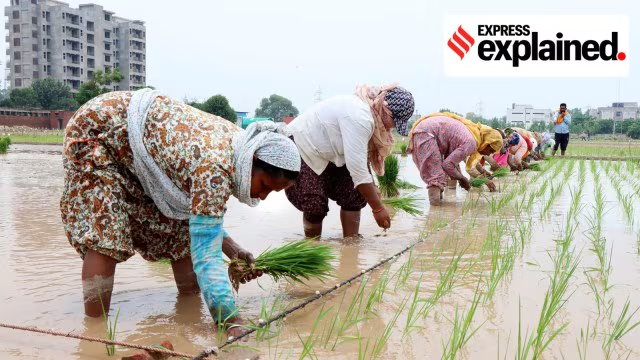The cultivation of paddy varieties like PUSA-44, which takes longer to grow and requires more water, has been discouraged in Punjab. Why are farmers in several districts unwilling to stop their cultivation? Workers plants paddy at the research field at Punjab Agricultural University in Ludhiana. (Express photo by Gurmeet Singh) Punjab’s paddy farmers have started sowing seeds for this year’s kharif season, even as the high-yield, long-duration growth variety PUSA-44 has been banned in the state since last year.
Chief Minister Bhagwant Mann also claimed recently that the government managed to decrease area under PUSA-44 cultivation in 2023 as compared to 2022. This reportedly saved 5 billion cusecs of water, given its higher irrigation needs, and Rs. 477 crores through reduced power consumption.

However, preventing farmers from sowing PUSA-44 and two other non-recommended long-duration varieties could prove quite challenging in many districts. We explain. In October 2023, the Punjab government banned PUSA-44.
Cultivation of other varieties, such as Peeli PUSA and Dogar PUSA, has also been discouraged as they take between 158 to 162 days to grow, from sowing nursery to harvesting. The longer duration means five to six extra cycles of irrigation, all while Punjab faces severe groundwater depletion. Moreover, this variety is also known to exacerbate the issue of stubble burning in the state.
The straw stubble or residue of the rice crop planted in the kharif season (from July.























